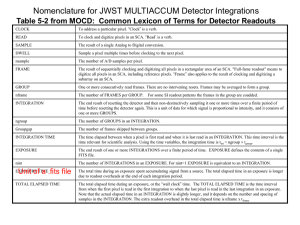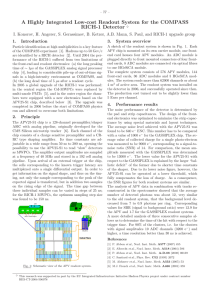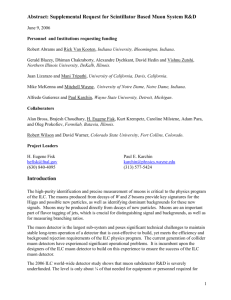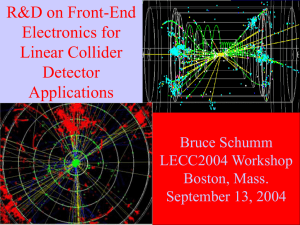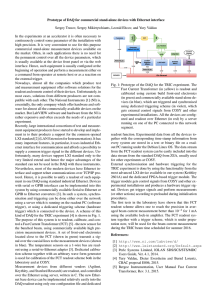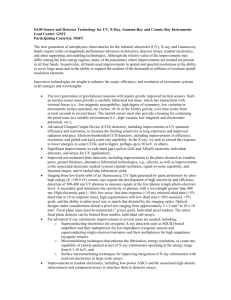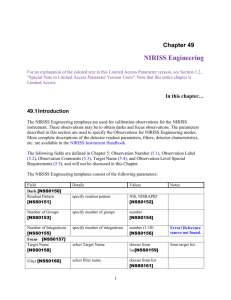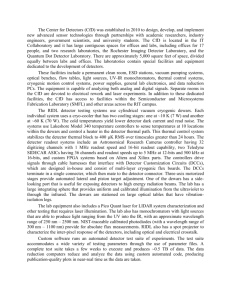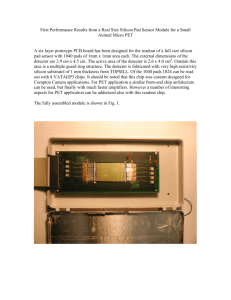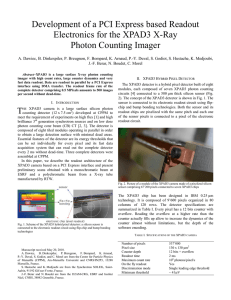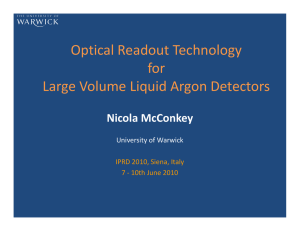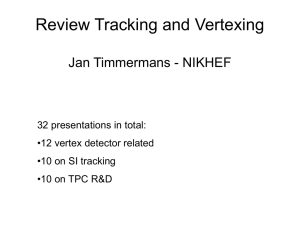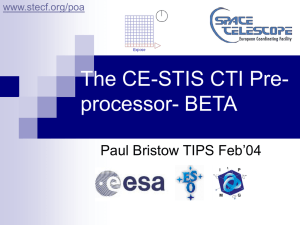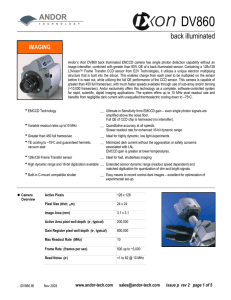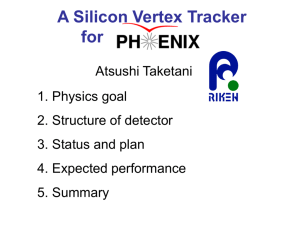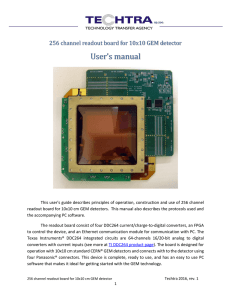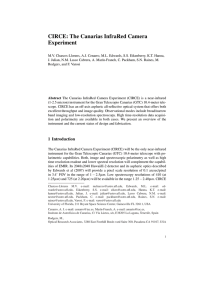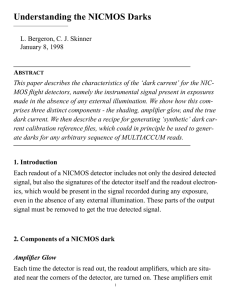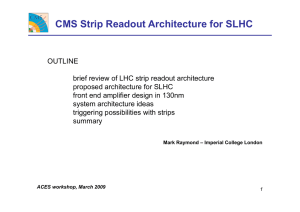Word
advertisement
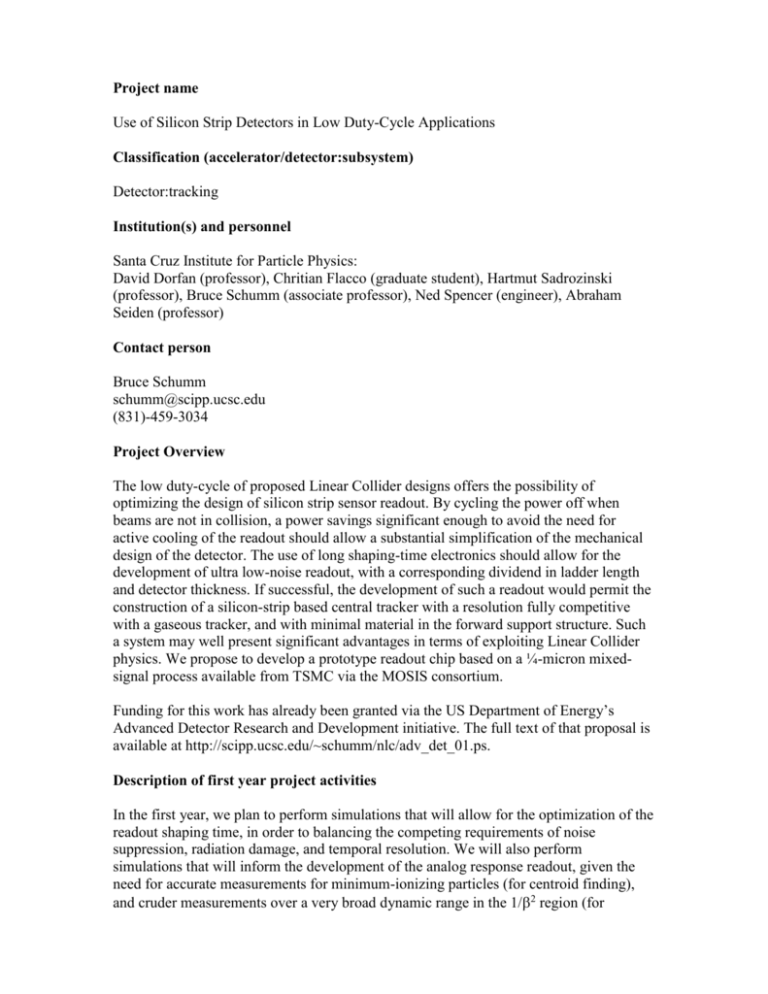
Project name Use of Silicon Strip Detectors in Low Duty-Cycle Applications Classification (accelerator/detector:subsystem) Detector:tracking Institution(s) and personnel Santa Cruz Institute for Particle Physics: David Dorfan (professor), Chritian Flacco (graduate student), Hartmut Sadrozinski (professor), Bruce Schumm (associate professor), Ned Spencer (engineer), Abraham Seiden (professor) Contact person Bruce Schumm schumm@scipp.ucsc.edu (831)-459-3034 Project Overview The low duty-cycle of proposed Linear Collider designs offers the possibility of optimizing the design of silicon strip sensor readout. By cycling the power off when beams are not in collision, a power savings significant enough to avoid the need for active cooling of the readout should allow a substantial simplification of the mechanical design of the detector. The use of long shaping-time electronics should allow for the development of ultra low-noise readout, with a corresponding dividend in ladder length and detector thickness. If successful, the development of such a readout would permit the construction of a silicon-strip based central tracker with a resolution fully competitive with a gaseous tracker, and with minimal material in the forward support structure. Such a system may well present significant advantages in terms of exploiting Linear Collider physics. We propose to develop a prototype readout chip based on a ¼-micron mixedsignal process available from TSMC via the MOSIS consortium. Funding for this work has already been granted via the US Department of Energy’s Advanced Detector Research and Development initiative. The full text of that proposal is available at http://scipp.ucsc.edu/~schumm/nlc/adv_det_01.ps. Description of first year project activities In the first year, we plan to perform simulations that will allow for the optimization of the readout shaping time, in order to balancing the competing requirements of noise suppression, radiation damage, and temporal resolution. We will also perform simulations that will inform the development of the analog response readout, given the need for accurate measurements for minimum-ionizing particles (for centroid finding), and cruder measurements over a very broad dynamic range in the 1/ region (for identifying slow-moving heavy particles). These simulations will be carried out by UC Santa Cruz graduate student Christian Flacco. We will also begin the design of the prototype readout chip with Ned Spencer, who will be the lead engineer on the project. Finally, we will begin the development of a prototype long ladder for tests of the readout chip. Budget As mentioned above, this initiative has already been funded by the DOE ADR program. No additional support is being requested for this work.
